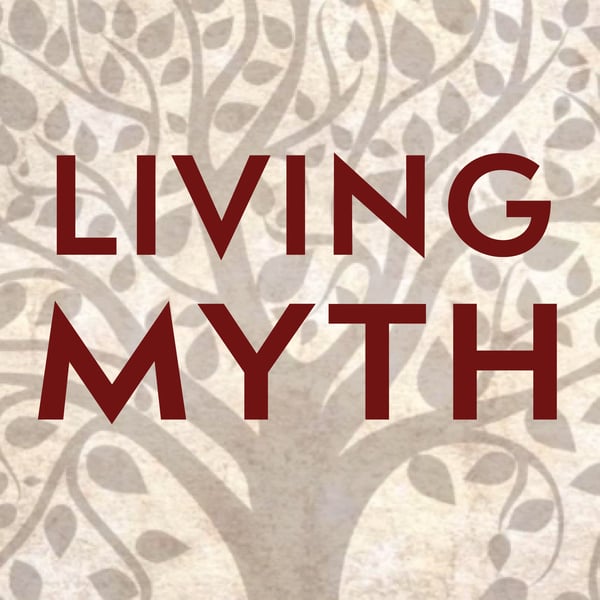Episode 379 - Earth Day and the Origins of Gaia
Living Myth
Michael Meade
4.9 • 944 Ratings
🗓️ 17 April 2024
⏱️ 29 minutes
🧾️ Download transcript
Summary
Originally, the Vedas existed in the form of chants and hymns with the root sound Om being the original tone emitted from the womb of the cosmos. The potent chant known as the Gayatri Mantra was considered the first hymn to come forth from the root sound Om. Thus, Gaya or Gaia whether in sound, in image or in name brings a long lineage that echoes back to the origins of life and resonates with the hidden unity of the world.
Thank you for listening to and supporting Living Myth. You can hear Michael Meade live by joining his new online workshop “Facing Fate, Finding Destiny” on Saturday, May 11. Register and learn more at mosaicvoices.org/events.
You can save 30% on this new workshop and further support this podcast by becoming a member of Living Myth Premium. Members receive bonus episodes each month, access to the full archives of over 625 episodes and a 30% discount on all events, courses and book and audio titles. Learn more and join this community of listeners at patreon.com/livingmyth.
If you enjoy this podcast, we appreciate you leaving a review wherever you listen and sharing it with your friends. On behalf of Michael Meade and the whole Mosaic staff, we wish you well and thank you for your support of our work.
Transcript
Click on a timestamp to play from that location
| 0:00.0 | Welcome to the Living Myth Podcast with Michael Mead, where this shifting changing world is looked at from a |
| 0:16.9 | mythic perspective. |
| 0:19.5 | On this Earth Day episode, Mead begins by looking at the Gaya hypothesis published over 50 years ago. |
| 0:27.3 | He then explores the older roots of the name Gaya that can be traced back to ancient India where Gaya or Gaiatry appears as the ancient |
| 0:37.0 | goddess of creation. Gaiy appears in the Vedas or sacred texts as the source of all knowledge and wisdom. |
| 0:45.8 | As the mother of all, she also had the power to heal all ills and nurture all of life, so that |
| 0:52.4 | the well-being of the planet depended upon the presence and |
| 0:56.0 | support of Gaya. |
| 0:58.7 | Originally, the Vedas existed in the |
| 1:05.0 | form of chants and hymns with the root sound ome being the original tone emitted from the womb of the Cosmos. |
| 1:08.0 | The potent chant known as the Gyatry mantra was considered the first hymn to come forth from the root sound |
| 1:15.2 | ohm. Thus Gaia, whether in sound, an image, or a name, brings a long lineage that echoes back to the origins of life |
| 1:26.8 | and resonates with the hidden unity of the world. The first Earth Day event was well over 50 years ago on April 22nd, 1970. |
| 1:51.0 | At that time it became the largest secular day of protest in the history of the world. |
| 1:59.4 | Not long after that in 1972, the first articles on the Gaya hypothesis were published by the British chemist James Lovelock, also known as the Gaya Theory or the Gaya Paradise or the Gaya Principal, |
| 2:19.0 | Lovelock's writing posited that the Earth and its biological systems behave as a single entity. |
| 2:29.4 | The Geier principle further proposes that living organisms interact with their inorganic |
| 2:37.3 | surroundings on Earth to form a synergistic and self-regulating system that helps to maintain and perpetuate the conditions |
| 2:48.2 | for life on the planet. |
| 2:52.0 | Not surprisingly, the Gaya theory has faced several forms of criticism from scientists who argue |
| 2:59.8 | that the idea of life actively participating in shaping the environment for its own optimization |
| 3:08.8 | does not align with evolution or with natural selection principles. |
... |
Please login to see the full transcript.
Disclaimer: The podcast and artwork embedded on this page are from Michael Meade, and are the property of its owner and not affiliated with or endorsed by Tapesearch.
Generated transcripts are the property of Michael Meade and are distributed freely under the Fair Use doctrine. Transcripts generated by Tapesearch are not guaranteed to be accurate.
Copyright © Tapesearch 2025.

